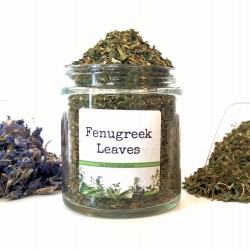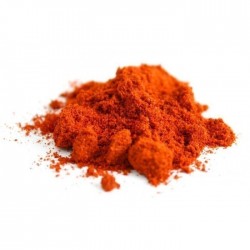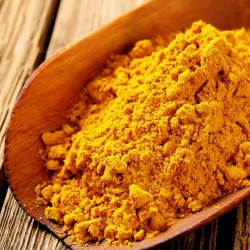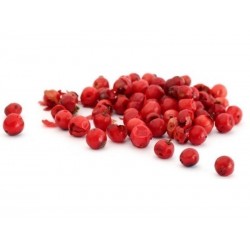

Spice Japanese Sichuan pepper
Cena
2,10 €
(SKU: Z 5)
Seeds Gallery EU,
5/
5
<!DOCTYPE html>
<html>
<head>
<meta http-equiv="Content-Type" content="text/html; charset=UTF-8" />
</head>
<body>
<h2><strong>Spice Japanese Sichuan pepper</strong></h2>
<h2><span style="color: #ff0000;"><strong>The price is for a pack of 10 grams.</strong></span></h2>
<p><b>Sichuan pepper</b>, <b>Sichuan peppercorn</b>, <b>Szechuan pepper</b>, or <b>Szechuan peppercorn</b>, is a c<span style="color: #000000;">ommonly used <span style="color: #000000;">spice</span> in <span style="color: #000000;">Chinese cuisine</span>. It is derived from at least two species of the global genus <i><span style="color: #000000;">Zanthoxylum</span></i>, including <i><span style="color: #000000;">Z. simulans</span></i> and <i><span style="color: #000000;">Z. bungeanum</span></i>. The genus <i>Zanthoxylum</i> belongs in the <span style="color: #000000;">rue or citrus family</span>, and, despite its name, is not closely related to either <span style="color: #000000;">black pepper</span> or the <span style="color: #000000;">chili pepper</span>.</span></p>
<p><span style="color: #000000;">The husk or hull (<span style="color: #000000;">pericarp</span>) around the seeds may be used whole, especially in <span style="color: #000000;">Sichuan cuisine</span>, and the finely ground powder is one of the ingredients for <span style="color: #000000;">five-spice powder</span>. It is also used in <span style="color: #000000;">traditional Chinese medicine</span>. The pericarp is most often used, but the leaves of various species are also used in some regions of China.</span></p>
<p><span style="color: #000000;">Another species of <i>Zanthoxylum</i> native to China, <i><span style="color: #000000;">Z. schinifolium</span></i>, called <i>xiāng jiāo zi</i> (<span title="Chinese language text" xml:lang="zh" lang="zh">香椒子</span>, "aromatic peppercorn") or <i>qīng huā jiāo</i> (<span title="Chinese language text" xml:lang="zh" lang="zh">青花椒</span>, "green flower pepper"), is used as a spice in <span style="color: #000000;">Hebei</span>.</span></p>
<p><span style="color: #000000;">While the exact flavour and composition of different species from the genus <i>Zanthoxylum</i> vary, most share the same essential characteristics. So while the terms "Sichuan pepper" and <i><span style="color: #000000;">sanshō</span></i>may refer specifically to <i>Z. simulans</i> and <i><span style="color: #000000;">Z. piperitum</span></i>, respectively, the two are commonly used interchangeably.</span></p>
<p><span style="color: #000000;">Related species are used in the cuisines of Tibet, <span style="color: #000000;">Bhutan</span>, Nepal, <span style="color: #000000;">Thailand</span>, and India (the <span style="color: #000000;">Konkani</span> and <span style="color: #000000;">Kumaoni</span> people) and <span style="color: #000000;">Toba Batak</span> peoples. In Bhutan, this pepper is known as <i>thingye</i> and is used liberally in preparation of soups, gruels, and <i>phaag sha paa</i> (pork slices). In Nepal, <i>timur</i> is used in the popular foods <span style="color: #000000;"><i>momo</i></span>, <i><span style="color: #000000;">thukpa</span></i>, <span style="color: #000000;">chow mein</span>, chicken chilli, and other meat dishes. It is also widely used in homemade pickles. People take <i>timur</i> as a medicine for stomach or digestion problems, in a preparation with cloves of garlic and mountain salt with warm water.</span></p>
<h2><span class="mw-headline" id="Culinary_uses">Culinary uses</span></h2>
<p><span style="color: #000000;"><span>Sichuan pepper's unique aroma and flavour is not hot or pungent like black, white, or chili peppers. Instead, it has slight lemony overtones and creates a tingly numbness in the mouth (caused by its 3</span></span>% of<span style="color: #000000;"> <span style="color: #000000;">hydroxy alpha sanshool</span>) that sets the stage for hot spices. According to <span style="color: #000000;">Harold McGee</span> in <i><span style="color: #000000;">On Food and Cooking</span></i>,<span> they are not simply pungent; "they produce a strange, tingling, buzzing, numbing sensation that is something like the effect of carbonated drinks or of a mild electric current (touching the terminals of a nine-volt battery to the tongue). Sanshools appear to act on several different kinds of nerve endings at once, induce sensitivity to touch and cold in nerves that are ordinarily nonsensitive, and so perhaps cause a kind of general neurological confusion."</span></span></p>
</body>
</html>
Z 5


















